'They thought they were buying heroin': How fentanyl invaded the U.S.
The U.S. opioid crisis has evolved into a fentanyl crisis.
According to the Government Accountability Office, “synthetic opioids like fentanyl accounted for more than 19,000 of the nearly 64,000 overdose deaths in 2016.” And according to CDC data, 2017 saw more than 28,000 deaths involving synthetic opioids in the U.S., which is more than any other type of opioid.
Bryce Pardo, associate policy researcher at the RAND Corporation, explained that there are different ways that fentanyl usage — both as powerful painkiller prescribed by doctors and a street drug — manifested in the U.S.
“By and large, when this problem started, it’s important to keep in mind that drug users themselves did not want fentanyl,” he told Yahoo Finance. “They didn’t know they were coming into contact with fentanyl. They thought they were buying heroin, or they thought they were buying a prescription tablet.”
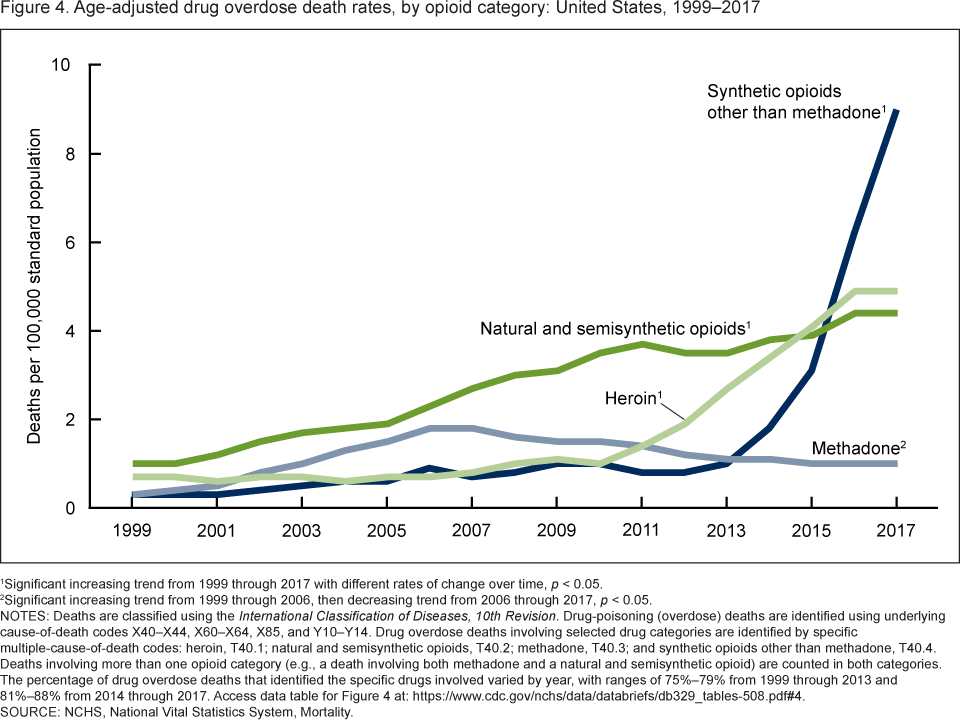
The largest source of fentanyl: China
According to the World Drug Report 2019, “North America is the principal market for fentanyls, but seizure data suggest that trafficking has expanded worldwide. While just four countries reported fentanyl seizures to UNODC in 2013, 12 countries did so in 2016 and 16 countries in 2017.”
China is the largest source of illicit fentanyl, according to the U.S.-China Economic and Security Review Commission (USCC), as well as fentanyl-like substances that have been increasingly imported into the U.S. in recent years.
Much of it has been attributed to weak regulations on China’s side.
“Because the Chinese government schedules chemicals one by one, illicit manufacturers create new substances faster than they can be controlled,” the USCC’s brief said. “U.S. officials have proposed strategies for Beijing to systematically control all fentanyl substances, but the changes have not been approved by the Chinese government.”
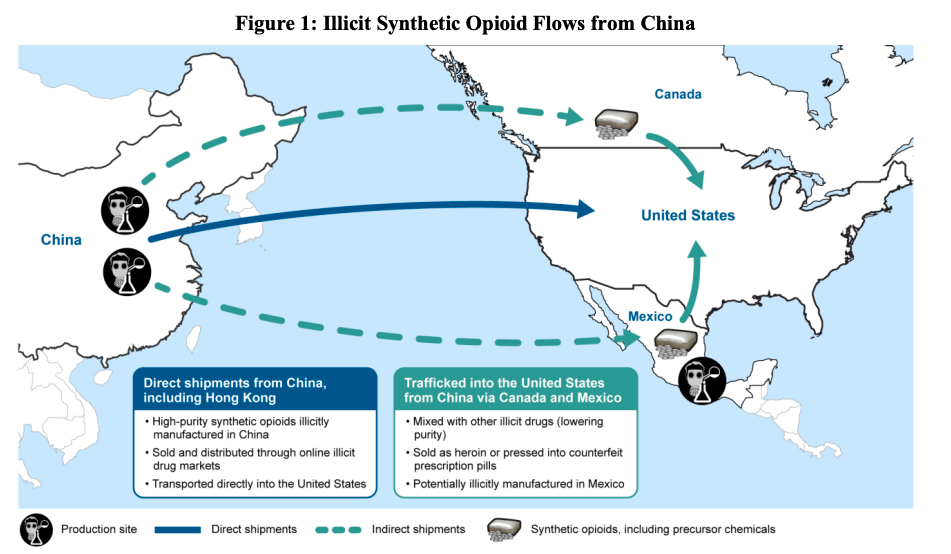
Mike Vigil, former chief of operations for the Drug Enforcement Agency (DEA), told Yahoo Finance that until recently, the “was playing Whack-a-Mole with these laboratories that produce fentanyl in China.”
He continued: “They would basically put fentanyl under the controlled substance list. But then these laboratories would slightly alter the molecular structure of fentanyl and create what we call analogs, which meant the Chinese government then had to put these analogs under their controlled substance list, which would take anywhere from 8 months to 12 months.”
The USCC stated that these shoddy regulations are in large part because local governments were prioritizing economic growth and development objectives “above all else,” in addition to “the fragmented nature of China’s administrative system that oversees the production and export of chemical and pharmaceutical products.”
Lax postal service regulations also contributed to the drug’s rise in the U.S. Initially, those who were shipping fentanyl from China to the U.S. would mislabel the packages and ship them through another country as an extra precaution.
The U.S. recognized the flaws in its postal system and tried to remedy it through the Synthetic Trafficking and Overdose Prevention (STOP) Act, which was signed into law in October 2018. The legislation mandates that the USPS require being supplied with advanced electronic information for all shipments arriving internationally.
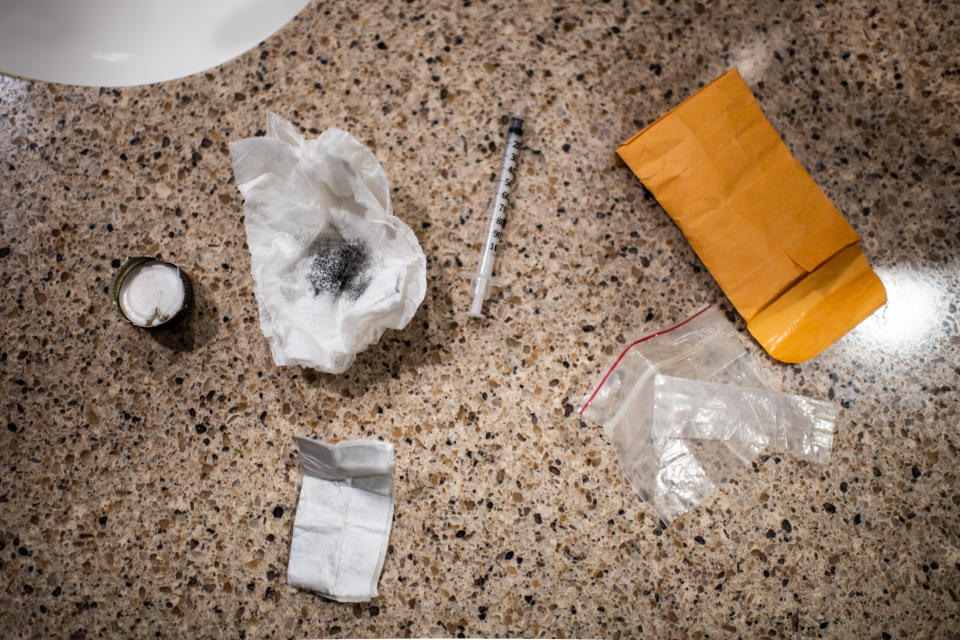
‘Most of it came, quite frankly, through FedEx’
While there is no specific date for when fentanyl usage in the U.S. became such a prominent issue, former Principal Deputy Administrator for the DEA Jack Riley said it was around 2006.
“That’s when a particular clandestine lab in Mexico, which was being run by cartels, produced the first large-scale batch,” Riley told Yahoo Finance. “And that batch, unfortunately, made it to Chicago. And as a result, I think in a mere two weeks, there were about 20 overdose deaths.”
It was around 2012 or 2013, according to Riley, when the Chinese origin of fentanyl began to arise.
“Most of it came, quite frankly, through FedEx in the mail because obviously you can send a small portion of fentanyl and once it’s cut properly, it increases its value, thereby increasing your profits,” he said.
“Many times they would have cover companies that on the surface, appear to be a legitimate import-export company, and inside the package of legitimate load, there would be a secret [stash] of fentanyl,” he added. “Any way you can imagine they could hide it to get it here, they did.”
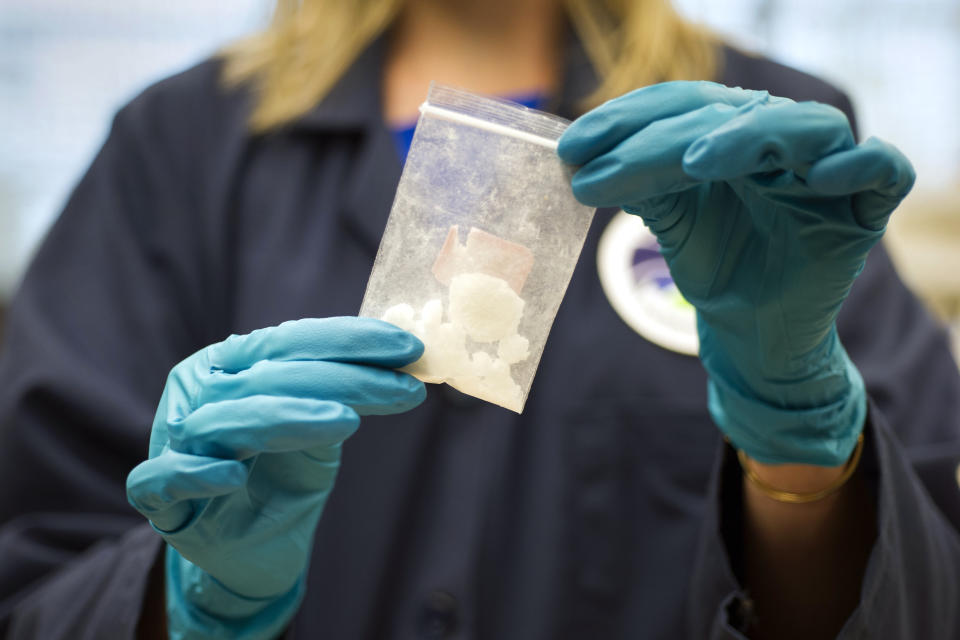
‘Huge marketing campaign by the pharmaceutical companies’
Vigil estimated that it was around 2007 when the fentanyl drug trade became prevalent.
“The big reason is that, No. 1, the fact that it was inexpensive in terms of getting it from China,” he said. “Secondly, there was a huge marketing campaign by the pharmaceutical companies [to sell opioids], without telling the American public about how dangerous fentanyl was. And then it was overprescribed by the doctors.”
In February, the medical journal JAMA published research detailing how the Food and Drug Administration (FDA), pharmaceutical companies, and doctors overprescribed fentanyl as a painkiller from 2012 to 2017. And so the drug — which is sometimes administered when patients with chronic pain are physically tolerant to other opioids — reached more people than it should have and spilled over into the street trade.
“If they had enough pain and they needed to do pain management, what they would do is instead of giving them three days of fentanyl, they would give them 30 days,” Vigil said. “A lot of times, they didn’t need that amount. Some of those overprescribed fentanyl pills [were] on their way into the illicit market.”
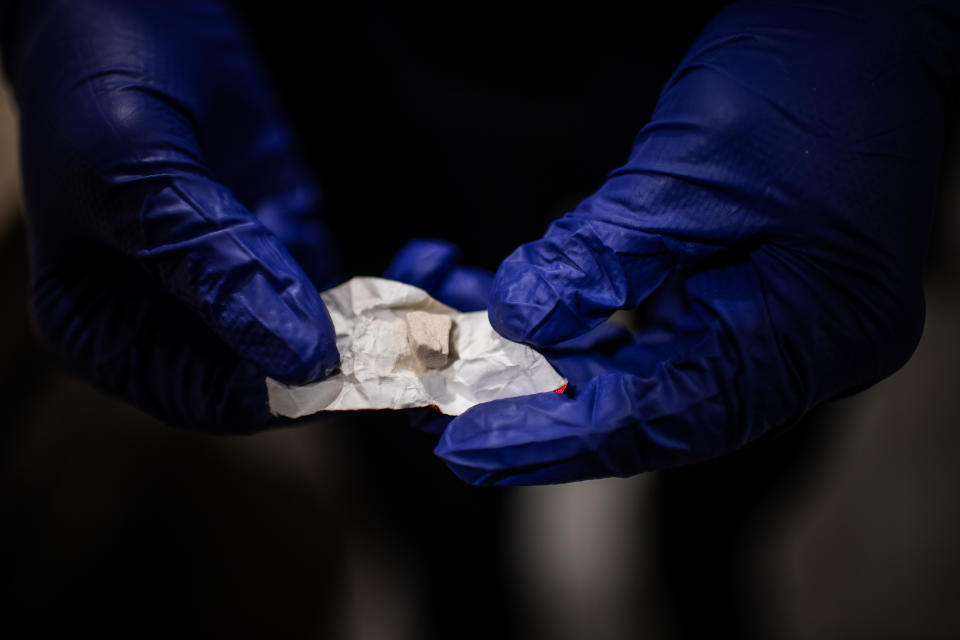
Several pharmaceutical companies have come under fire recently facing lawsuits alleging their roles in the rise of opioid addiction. Forty eight states and the District of Columbia sued Purdue Pharma over its marketing tactics in relation to opioids. The founder of Insys Therapeutics and four top executives were recently convicted for bribing physicians to prescribe fentanyl spray to patients who didn’t need it.
“We really need to clip the wings of these pharmaceutical companies when it comes to marketing,” Vigil said. “Some of them don’t even have good control, in terms of security, over their facilities. There’s a lot of diversion of those drugs into the illicit market. And, Congress needs to pass more stringent laws and stop lining their pockets with money from these pharmaceutical companies.”
‘They have also learned how to manufacture fentanyl’
The DEA has made efforts to address these issues in China.
“Several of our guys traveled frequently to China to try to work something out,” Riley said. “The real issue with the Chinese fentanyl is that their chemical industry is so deregulated, that it’s very difficult for these small mom-and-pop labs, for the government to even know they exist. So that’s part of the issue. The Chinese have made an effort in the last couple of years to try to change some of those laws and get a bigger role in regulation, but right now, it’s pretty bad.”
Vigil added that “we need to work with [China], and they are going to need help with a lot of resources in terms of monitoring the thousands of laboratories that are pushing that fentanyl and what have you,” Vigil said. “We really need to monitor these countries such as Germany, India, China, in terms of movement of precursor chemicals into the hands of criminal or transnational organized crime networks that will use them to produce fentanyl and other synthetic opioids.”
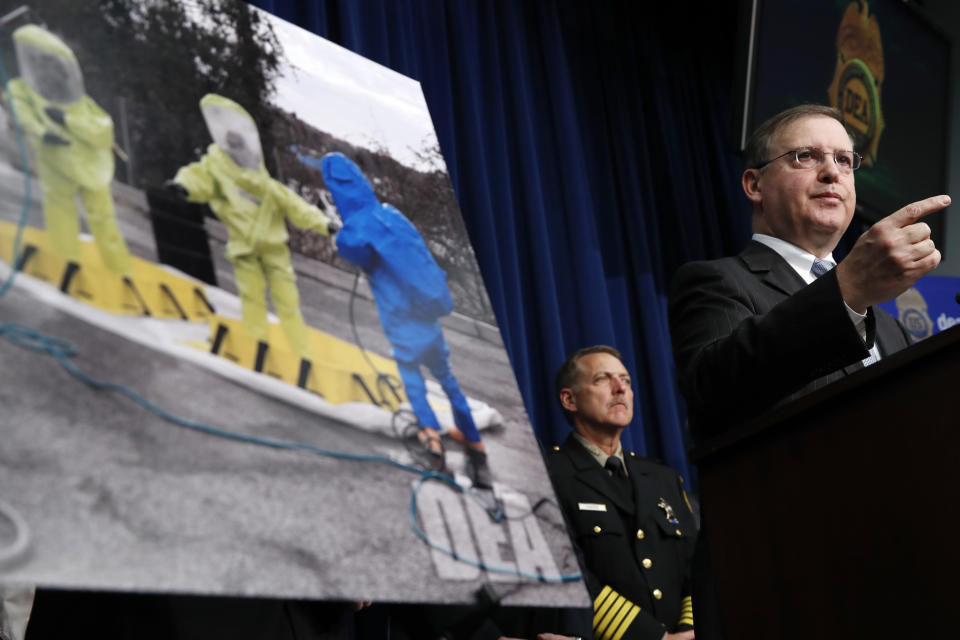
Vigil predicted that fentanyl is the “upcoming lucrative drug” for Mexican drug cartels.
A recent report from InSight Crime indicated that “Mexico is a growing transit and production point for fentanyl, with most of the product entering via the ports of Manzanillo and Lázaro Cárdenas,” and two cartels “trafficking it the most are the Sinaloa Cartel and the Jalisco Cartel New Generation.”
Vigil explained that the cartels are evolving to continue pumping fentanyl into the U.S.
“The Mexican cartels have started to import ready-made fentanyl from China,” Vigil said. “They have also learned how to manufacture fentanyl. So apart from getting the finished product, they get the precursor chemicals to manufacture it on their own. Even if China were to stop the movement of precursor chemicals into Mexico, then they probably would turn to India for those precursor chemicals.”
Adriana is an associate editor for Yahoo Finance. Follow her on Twitter @adrianambells.
READ MORE:
'Just a piece': The U.S. opioid epidemic is costing a fortune in lost tax revenue
Read the latest financial and business news from Yahoo Finance
Follow Yahoo Finance on Twitter, Facebook, Instagram, Flipboard, SmartNews, LinkedIn, YouTube, and reddit.


